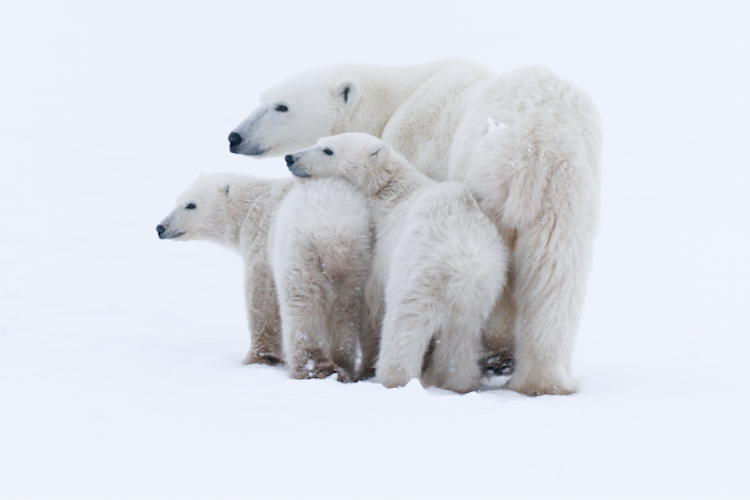Slow journey by Snowcat
The journey from the town of Churchill to Cape Churchill spans approximately 65 kilometers or 40 miles, with less than half of this distance covered by road. While the road portion of the trip posed little challenge, the remainder of the journey required some creativity and planning. With the tower weighing approximately 1,430 pounds, and an additional 920 pounds of batteries, no ordinary snow machine could safely transport such a heavy load safely. Fortunately, we enlisted the expertise of a local equipped with a BR400 Groomer, more commonly known as a Snowcat, as well as a purpose-built sled made from steel and lumber that was large enough and strong enough to support the trailer. You may have seen a track machine like this one on the side of a ski hill grooming trails, but in this case, their formidable towing capacity made it the ideal choice for our task.
The Snowcat travels slowly, and we had a lot of ground to cover, so this prompted an early morning departure. The cool weather ensured the snow and ice remained firm beneath our tracks, and fortunately, we encountered no water or slush along the way. It can be a fine balance finding the most opportune time to travel during the spring. Increasing sunlight and warmer temperatures help to smooth out the terrain and level the once hard-packed and bumpy snow drifts that make travel rough and unpleasant. However, if the weather is too warm you may encounter flooded or wet conditions that can impede travel and make a project like ours very difficult or impossible.
With sensitive equipment onboard we were grateful for the conditions we encountered, which made for a slow and uneventful journey to Cape.
I can’t imagine I was the only one feeling anxious about this last leg of the journey to Cape. Despite thorough planning and preparation, the unpredictable nature of such endeavors always looms large. No matter how meticulous our plans are, unforeseen challenges can arise, making success far from guaranteed. Had we missed the narrow window of opportunity in spring it would have forced us to wait another seven months until the following fall, when conditions once again permit travel over the snow and ice.
As we finally arrived at Cape Churchill, tensions eased, though the collective sighs of relief could not be heard over the rumble of the idling Snowcat's engine.




















